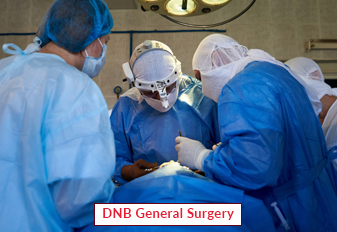Breast Lumpectomy

Breast lumpectomy is a surgery process to remove localized abnormal tissue or tumors. During a left breast lumpectomy procedure, the surgeon removes the cancer or other abnormal tissue and a small amount of the healthy tissue that surrounds it. It's typically used for early-level breast cancers or benign conditions, providing a less invasive option in comparison to mastectomy. The surgical treatment entails removing the tumor and surrounding tissue, observed by radiation remedy to reduce recurrence risk. Lumpectomy permits women to keep more in their breast tissue and is selected based totally on tumor size, most cancer stages, and patient desire.
Book an AppointmentAbout Breast Lumpectomy
Breast lumpectomy, also known as a partial mastectomy, is performed to remove breast cancer or focal lesions while preserving as much healthy breast tissue as possible and is usually performed for early-stage breast cancer in which the tumor is smaller and less extensive. The main reason for the Lumpectomy surgery is to treat early breast cancer in women and to preserve vital breast tissue. It is generally considered a less invasive alternative to mastectomy. This surgical decision is often based on factors such as tumor size, cancer stage, and patient preference. In addition to early breast cancer and benign breast conditions, breast tumors also carry a high risk like individuals with a strong family history of breast cancer or genetic mutations such as BRCA1 or BRCA2 -conditions. Diagnostic methods such as a needle or core biopsy may recommend a lumpectomy if cancer cells are found. Indications for a repeat examination include persistent breast pain, changes in shape or size, skin abnormalities, scarring, breast tenderness, skin tenderness or gallbladder harvested after diagnosis may be part of the treatment plan, usually radiation therapy, chemotherapy, or hormone therapy depending on cancer status Balance diet to help heal, stay active, stress management and compliance with postoperative care are indicated. Support groups can also provide emotional support during treatment
Procedure of Breast Lumpectomy
A lumpectomy, also known as breast-conserving surgery, involves the removal of a tumor (lump) and a small margin of surrounding healthy tissue from the breast. Here's a general outline of the procedure:
Preparation: Before the surgery, you'll receive instructions on how to prepare, which may include fasting for a certain period and avoiding certain medications.
Anesthesia: You'll be given anesthesia to ensure you're comfortable and pain-free during the procedure. This could be local anesthesia (numbing only the affected area), regional anesthesia (numbing a larger area), or general anesthesia (where you're unconscious).
Incision: The surgeon will make an incision in the breast to access the tumor. The size and location of the incision depend on the size and location of the tumor.
Tum or Removal: The surgeon will carefully remove the tumor along with a small margin of surrounding healthy tissue. This margin helps ensure that all cancerous cells are removed.
Sentinel Lymph Node Biopsy (optional): In some cases, the surgeon may also perform a sentinel lymph node biopsy to check if the cancer has spread to the nearby lymph nodes. This involves removing one or more lymph nodes for examination.
Closure: Once the tumor and, if necessary, lymph nodes are removed, the surgeon will close the incision with stitches or surgical staples. Sometimes, drainage tubes may be inserted to remove excess fluid from the surgical site.
Recovery: After the surgery, you'll be taken to a recovery area where medical staff will monitor your condition. You may experience some discomfort, swelling, and bruising, but these are usually temporary.
Follow-up: Your healthcare team will provide instructions for post-operative care, including wound care, pain management, and any restrictions on physical activity. You'll also schedule follow-up appointments to monitor your recovery and discuss further treatment options if needed, such as radiation therapy or chemotherapy
When the surgery done there are some common types that may be include in this operation and this is given by your surgeon and also you may require some medic
Require Assistance?
Get A Quick Callback From Our Healthcare Experts






